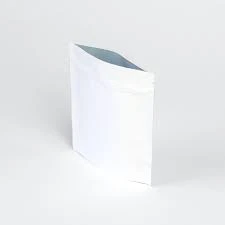- Afrikaans
- Albanian
- Amharic
- Arabic
- Armenian
- Azerbaijani
- Basque
- Belarusian
- Bengali
- Bosnian
- Bulgarian
- Catalan
- Cebuano
- chinese_simplified
- chinese_traditional
- Corsican
- Croatian
- Czech
- Danish
- Dutch
- English
- Esperanto
- Estonian
- Finnish
- French
- Frisian
- Galician
- Georgian
- German
- Greek
- Gujarati
- haitian_creole
- hausa
- hawaiian
- Hebrew
- Hindi
- Miao
- Hungarian
- Icelandic
- igbo
- Indonesian
- irish
- Italian
- Japanese
- Javanese
- Kannada
- kazakh
- Khmer
- Rwandese
- Korean
- Kurdish
- Kyrgyz
- Lao
- Latin
- Latvian
- Lithuanian
- Luxembourgish
- Macedonian
- Malgashi
- Malay
- Malayalam
- Maltese
- Maori
- Marathi
- Mongolian
- Myanmar
- Nepali
- Norwegian
- Norwegian
- Occitan
- Pashto
- Persian
- Polish
- Portuguese
- Punjabi
- Romanian
- Russian
- Samoan
- scottish-gaelic
- Serbian
- Sesotho
- Shona
- Sindhi
- Sinhala
- Slovak
- Slovenian
- Somali
- Spanish
- Sundanese
- Swahili
- Swedish
- Tagalog
- Tajik
- Tamil
- Tatar
- Telugu
- Thai
- Turkish
- Turkmen
- Ukrainian
- Urdu
- Uighur
- Uzbek
- Vietnamese
- Welsh
- Bantu
- Yiddish
- Yoruba
- Zulu
Innovative Designs in Milk Packaging for Freshness and Convenience
Milk Packaging Importance, Innovations, and Sustainability
Milk is one of the most widely consumed beverages around the world, known for its nutritional benefits and versatility. However, the way in which milk is packaged plays a crucial role in maintaining its quality, extending its shelf life, and ensuring consumer safety. In an era where sustainability and environmental consciousness have become paramount, innovations in milk packaging are continuously evolving. This article delves into the importance of milk packaging, recent innovations in the field, and the shift towards more sustainable practices.
Firstly, the importance of milk packaging cannot be overstated. The packaging serves multiple purposes it protects the milk from contamination, preserves its freshness, and provides essential information to consumers. Milk is highly perishable, and improper packaging can lead to spoilage caused by bacteria and exposure to light and air. Traditional packaging materials, such as glass, plastic, and cartons, each have their own advantages and disadvantages. For example, glass bottles are excellent for preserving the taste and quality of milk but can be heavy and breakable. On the other hand, plastic packaging is lightweight and unbreakable but raises concerns regarding environmental impact and chemical leaching.
In recent years, innovative technologies have emerged to enhance milk packaging
. One significant development is the use of aseptic packaging, which allows milk to be stored at room temperature for extended periods without the need for refrigeration. This technology uses a combination of high heat and sterile packaging materials to eliminate bacteria, effectively extending shelf life. As a result, consumers can enjoy milk without the need for constant refrigeration, making it a convenient option, especially in regions where access to cold storage is limited.milk packaging

Another breakthrough in milk packaging is the integration of smart technology. Smart packaging can provide valuable information to consumers regarding the freshness of the product. For instance, temperature indicators can display whether the milk has been stored at the appropriate temperature throughout its journey from the production facility to the consumer. This technology not only enhances consumer trust but also reduces food waste by ensuring only the freshest products are consumed.
Despite these advancements, the environmental impact of milk packaging remains a pressing issue. The dairy industry is challenged with balancing convenience and sustainability. As consumers become more environmentally conscious, the demand for eco-friendly packaging solutions is on the rise. In response, many companies are exploring biodegradable and recyclable materials as alternatives to traditional plastic. For example, some brands are now using innovative materials derived from plant-based sources, which can decompose in composting environments, thereby reducing landfill waste.
Moreover, local sourcing and refill stations are gaining popularity as sustainable options for packaging. Some companies are experimenting with milk vending machines that allow consumers to bring their own containers to refill with fresh milk, eliminating single-use packaging altogether. This not only minimizes waste but also supports local dairy farms by promoting farm-to-table practices.
In conclusion, milk packaging is a critical component of the dairy industry, influencing the safety, quality, and sustainability of this beloved beverage. With advancements in technology, such as aseptic packaging and smart indicators, consumers can enjoy more convenient and fresher products. However, the industry's move towards more sustainable practices remains an ongoing challenge that requires collaboration between producers, consumers, and packaging manufacturers. As we continue to seek a balance between convenience and environmental responsibility, innovations in milk packaging will undoubtedly play a significant role in shaping the future of the dairy industry. Embracing these changes not only benefits consumers but also contributes to a healthier planet for future generations.













